Unconference: A Guide For Hosting People-centric Events
 AI Summary
AI Summary
Key Insights
- Unconferences are participant-driven events where attendees set the agenda and contribute actively.
- Open Space Technology principles guide unconferences, focusing on contribution, relevance and flexibility.
- Unconferences are suitable for complex topics and require ongoing participation from diverse individuals.
- Key elements for planning an unconference include crafting the theme, selecting an appropriate duration and location, and sending invitations.
- During the unconference, welcome participants, establish an agenda grid for topic selection, facilitate note-taking and close with a gratitude session.
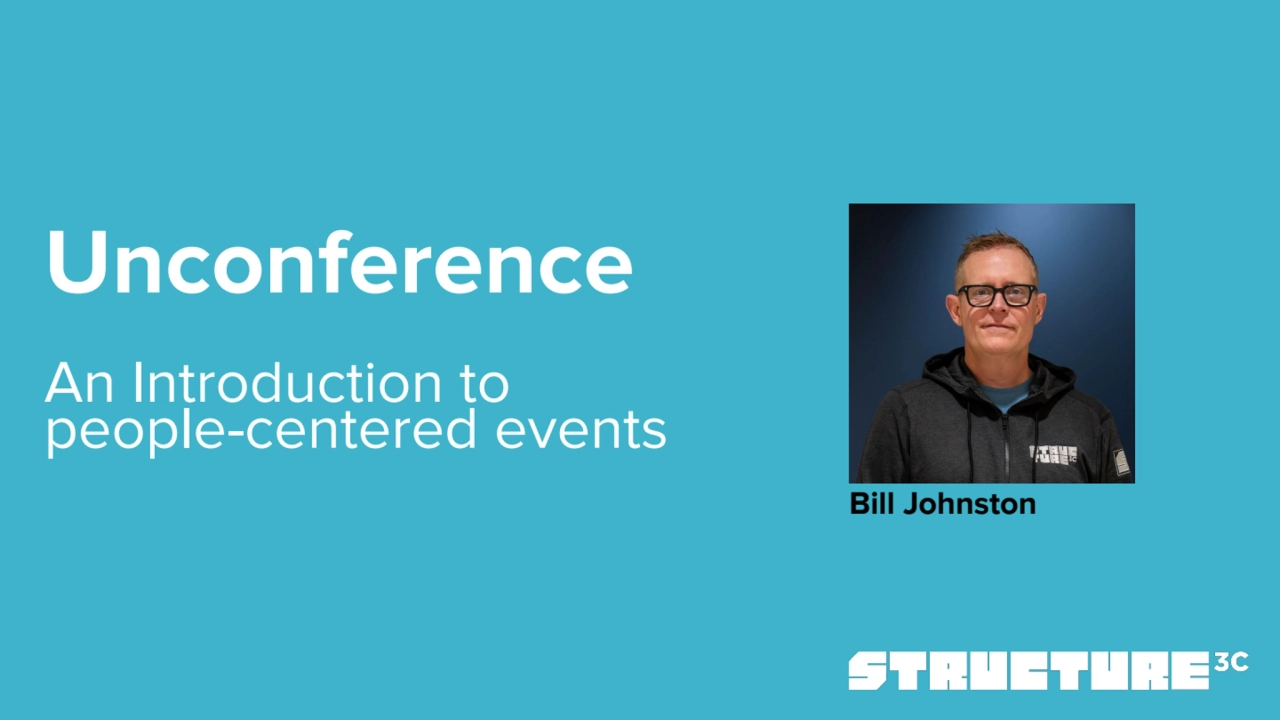
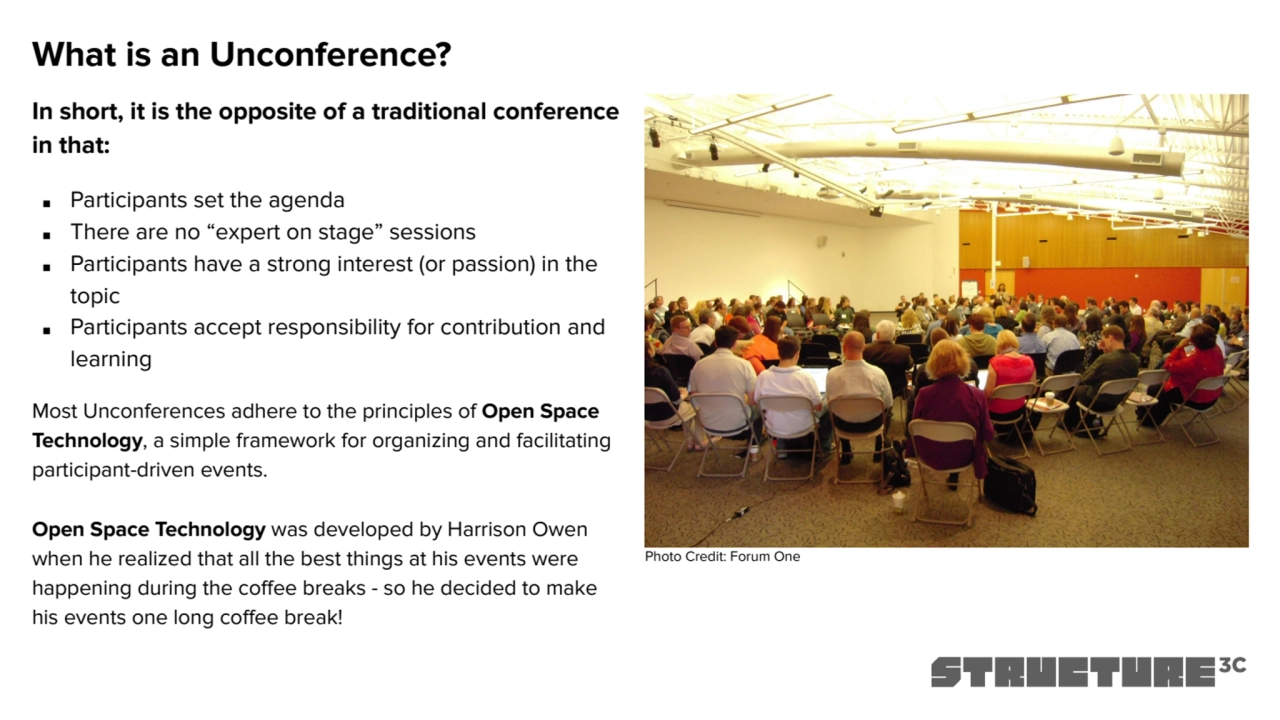
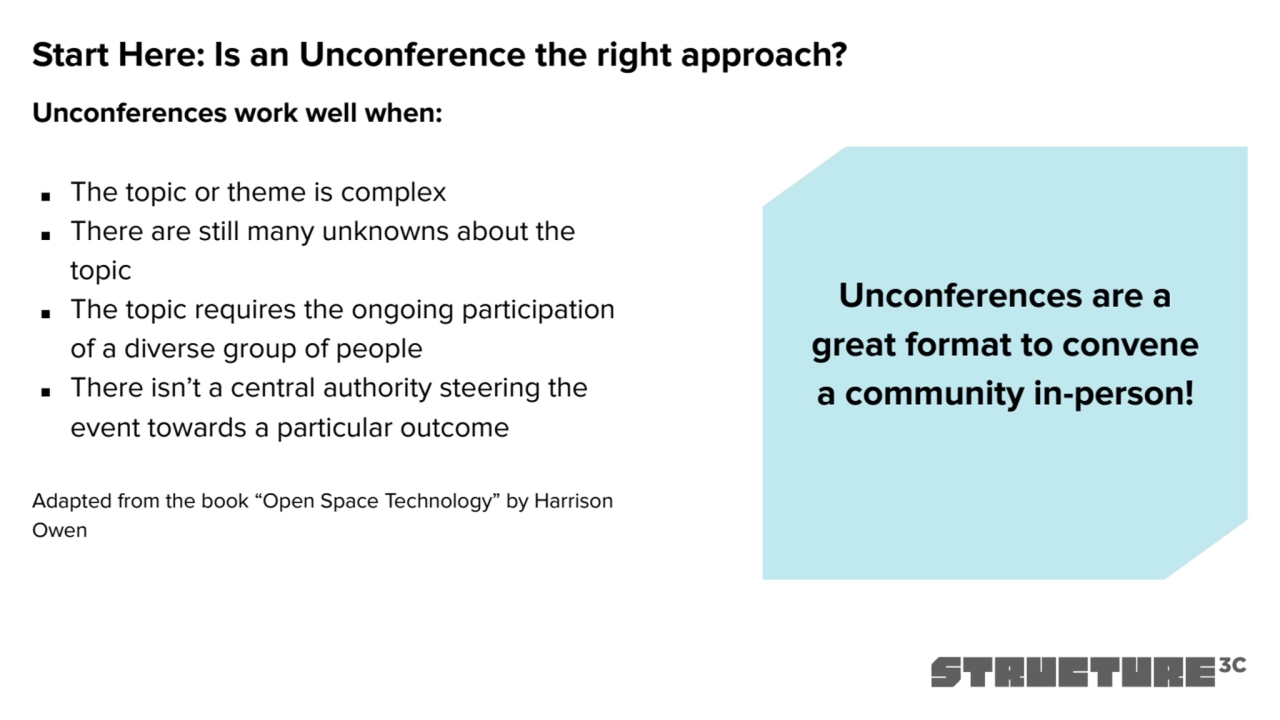
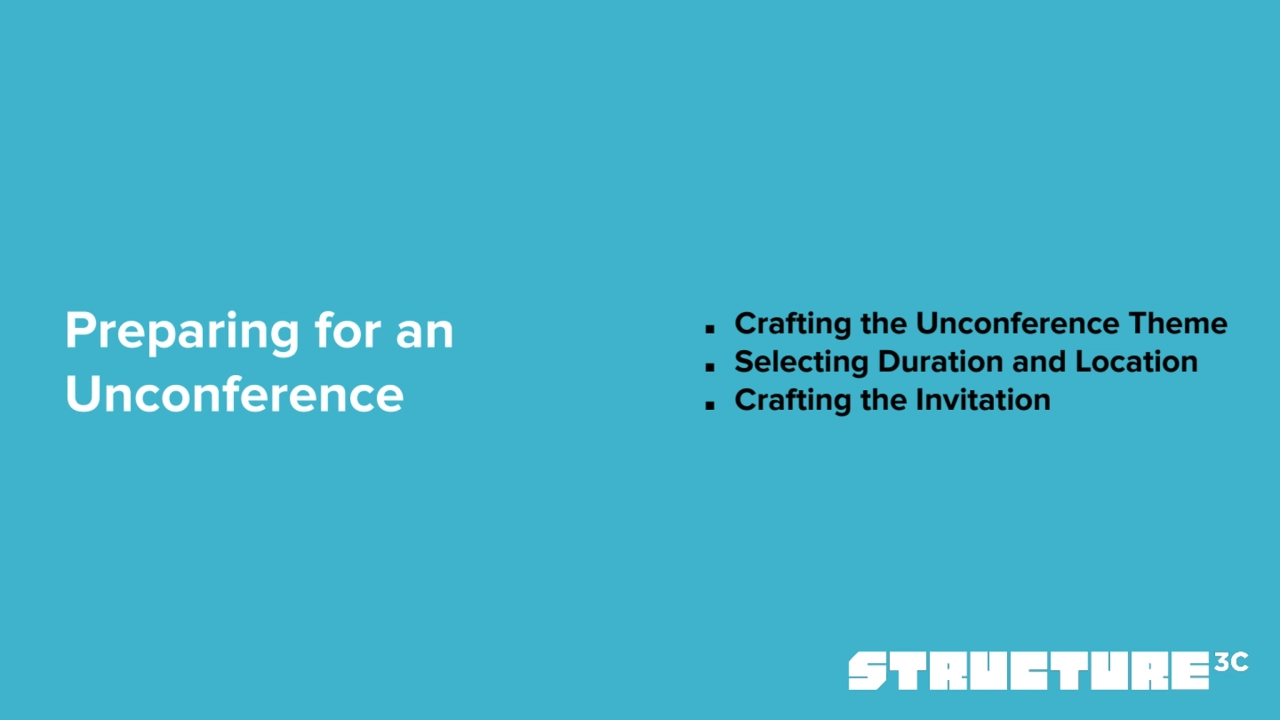
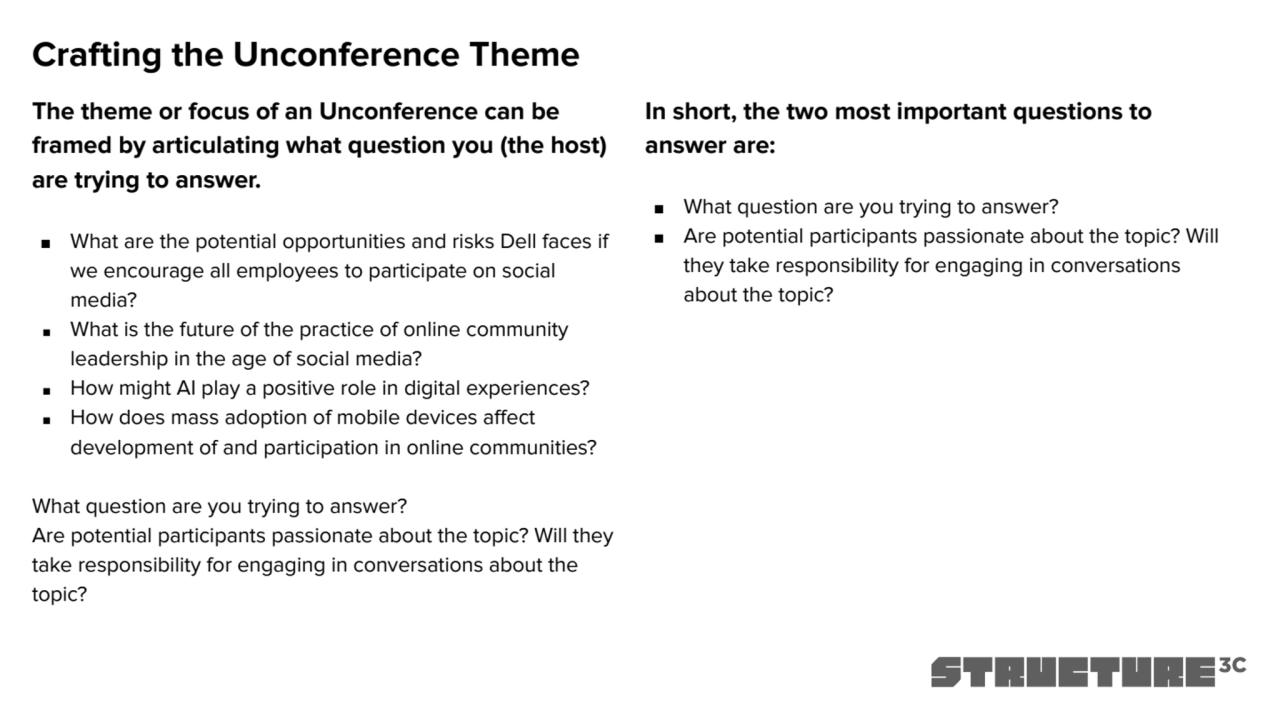
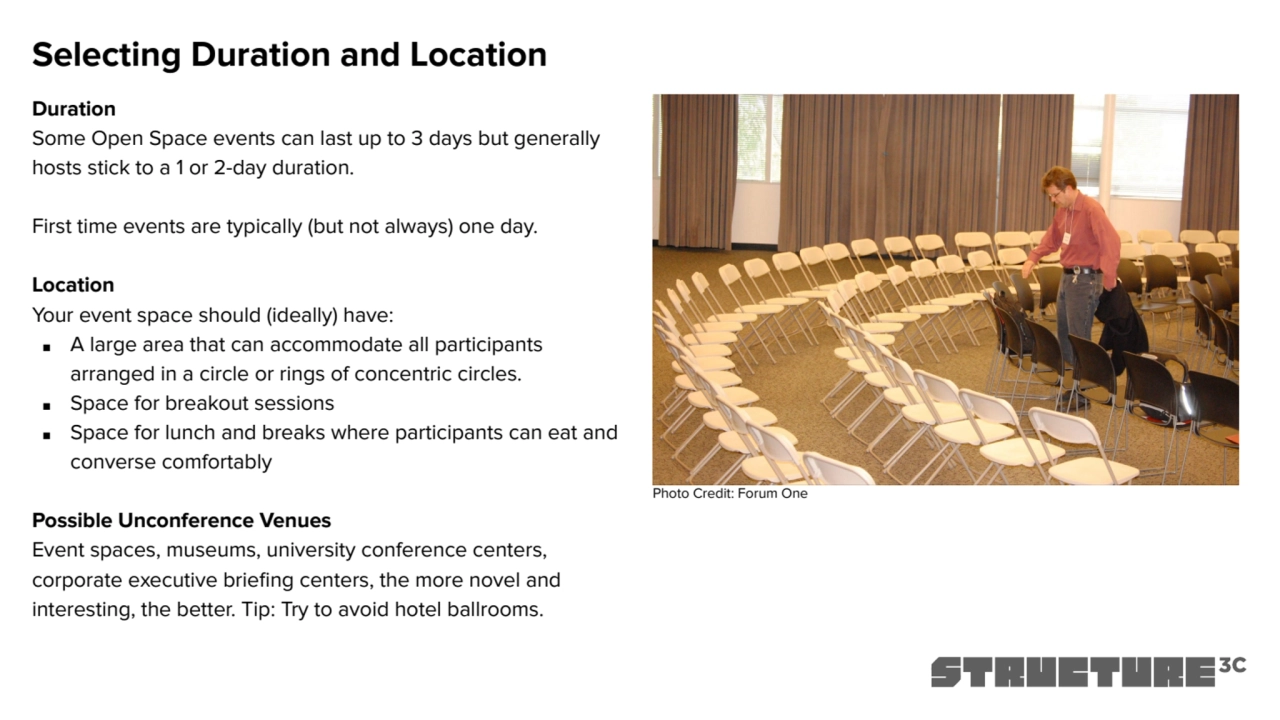
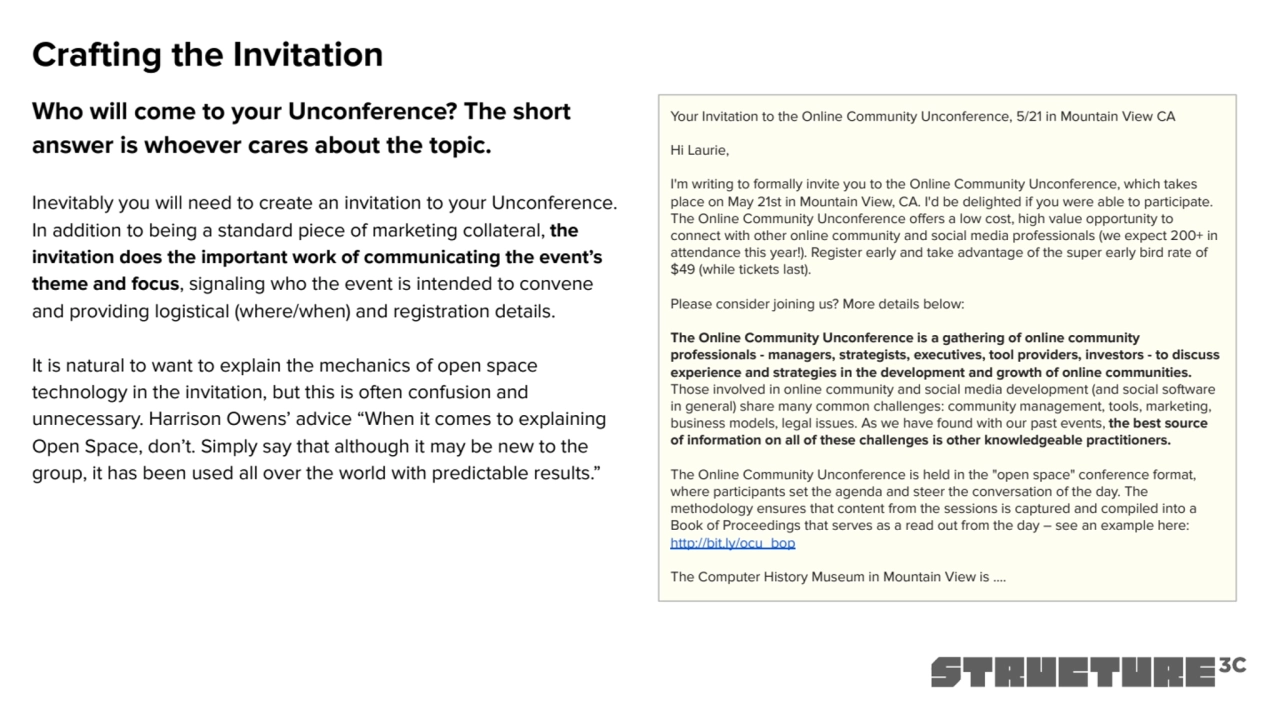
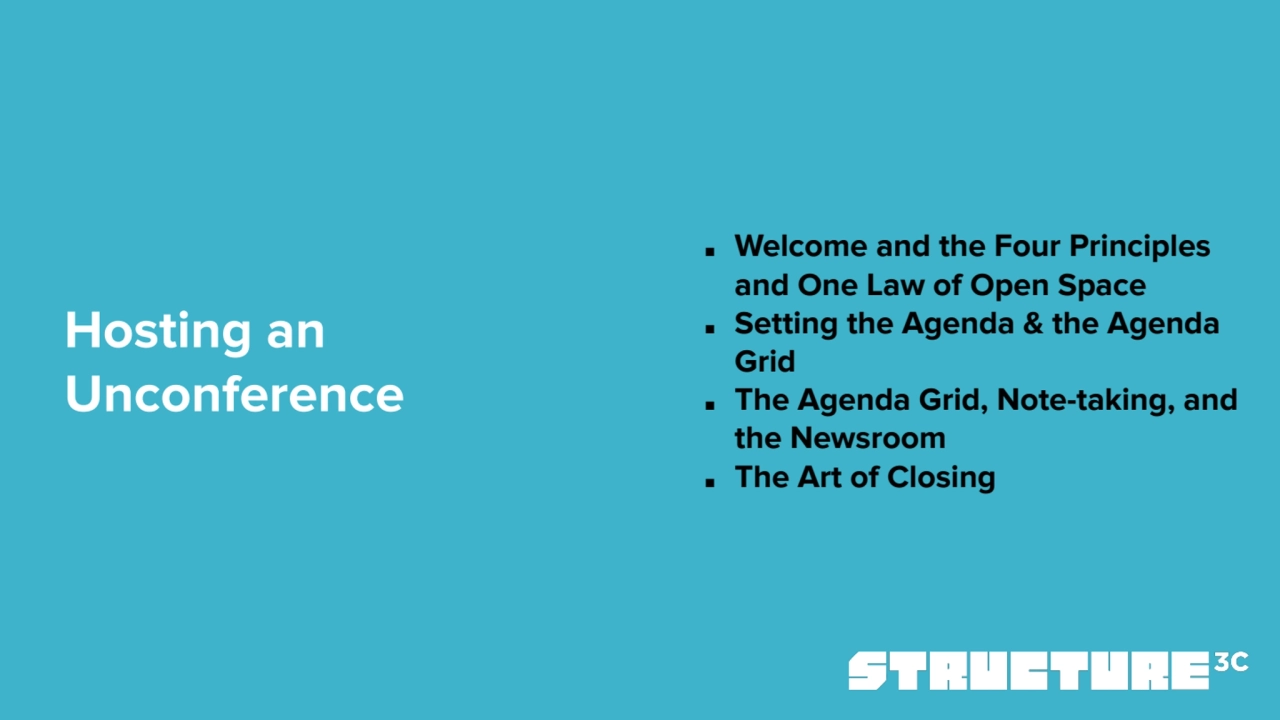
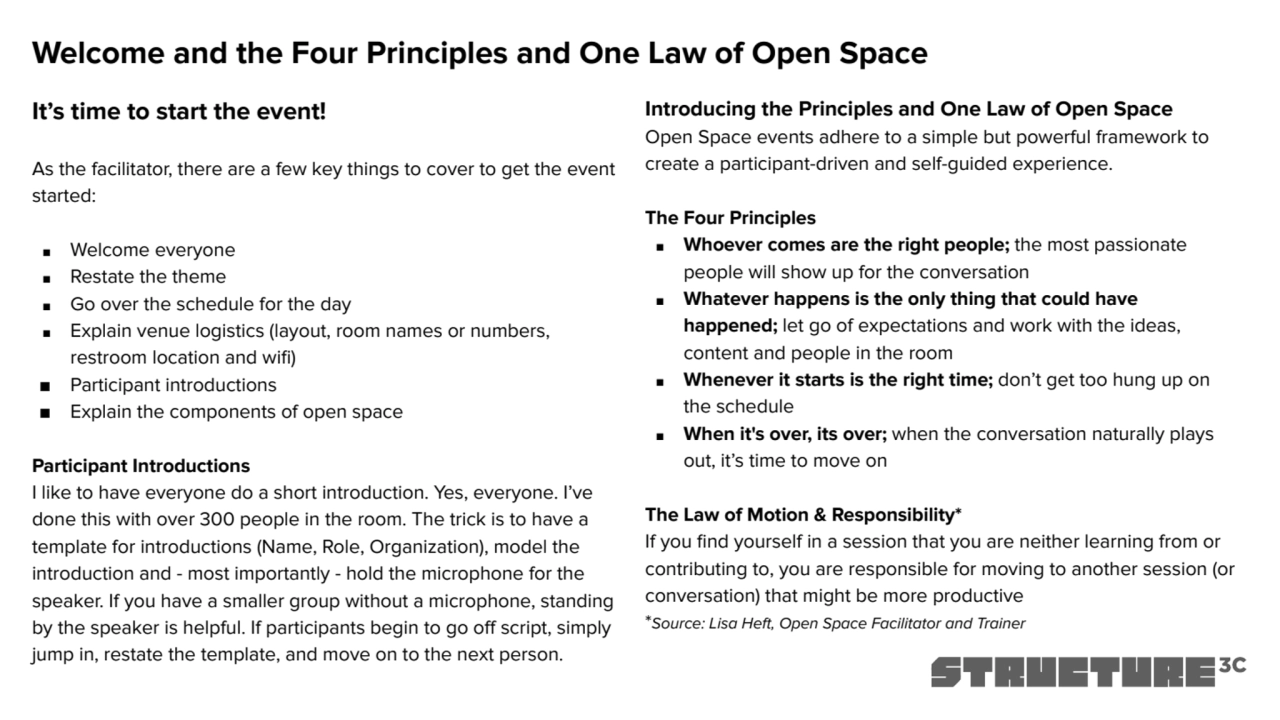
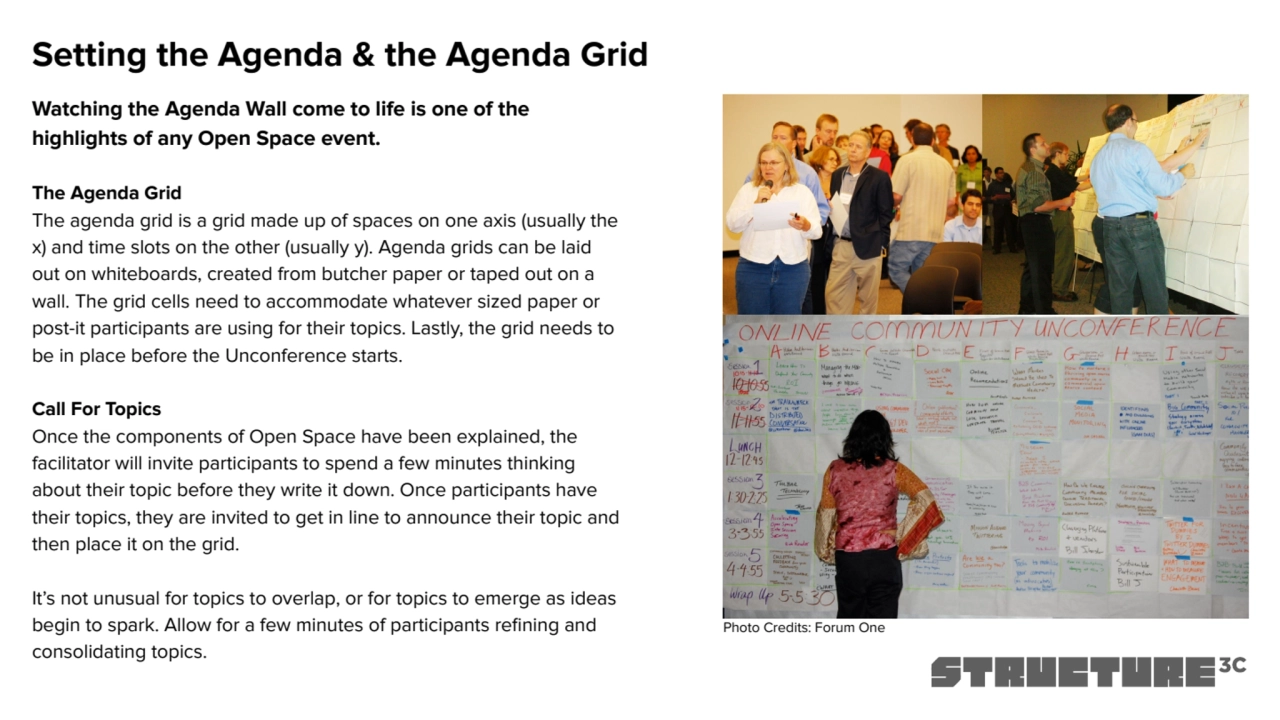
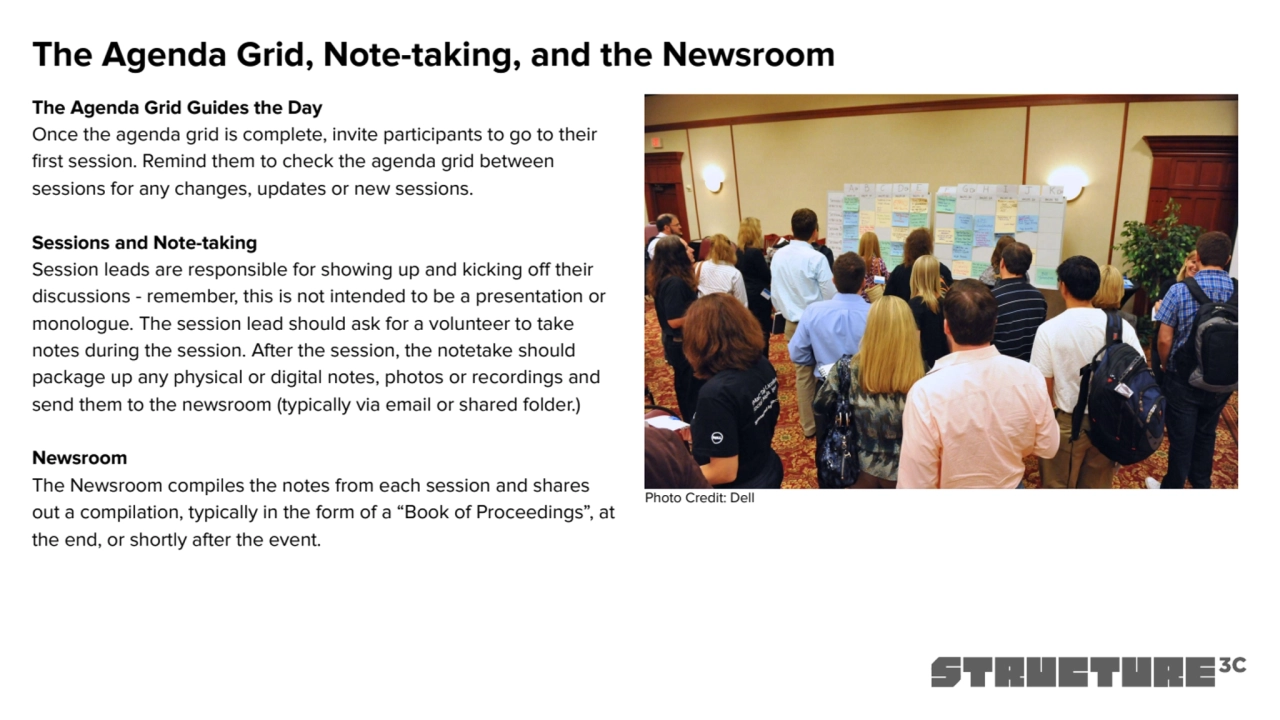
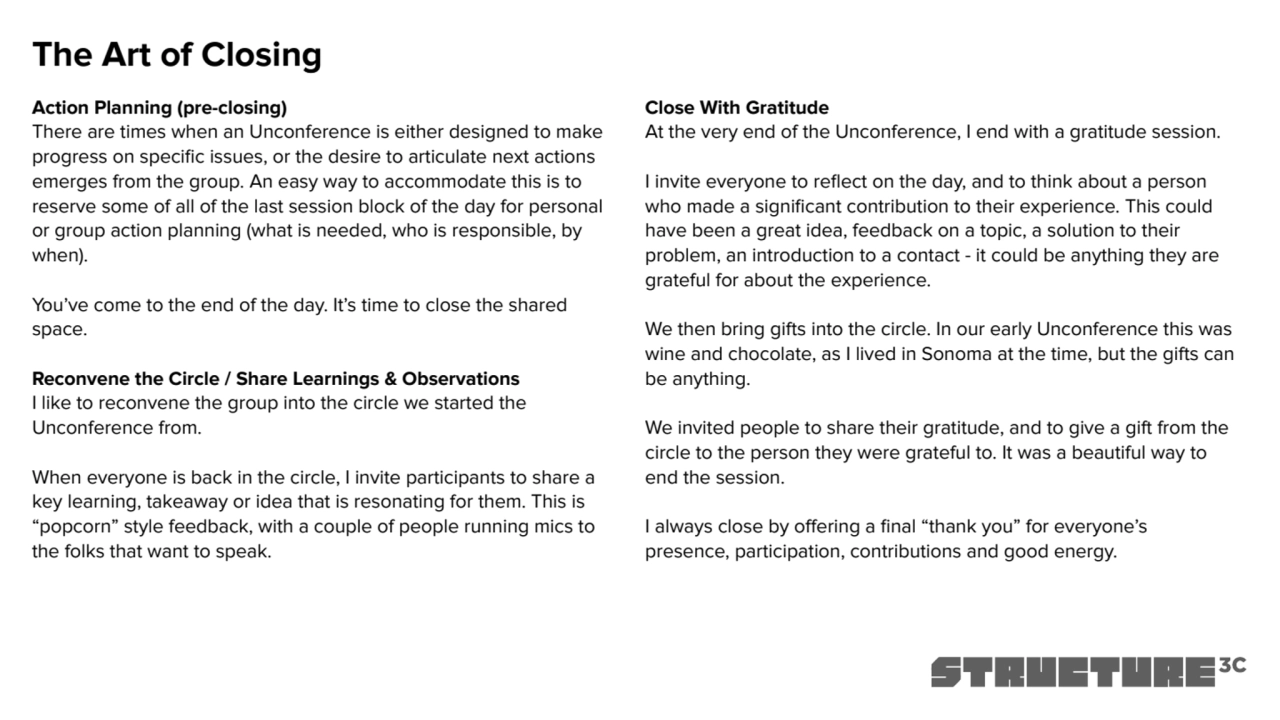

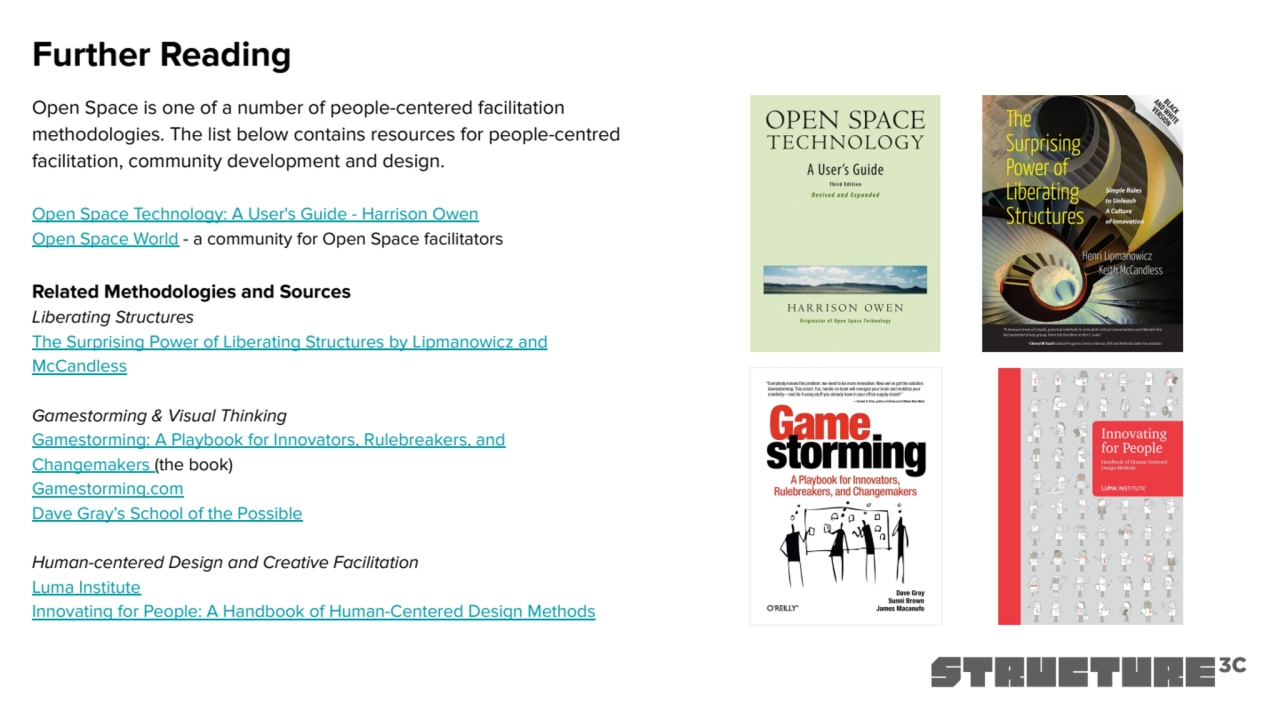
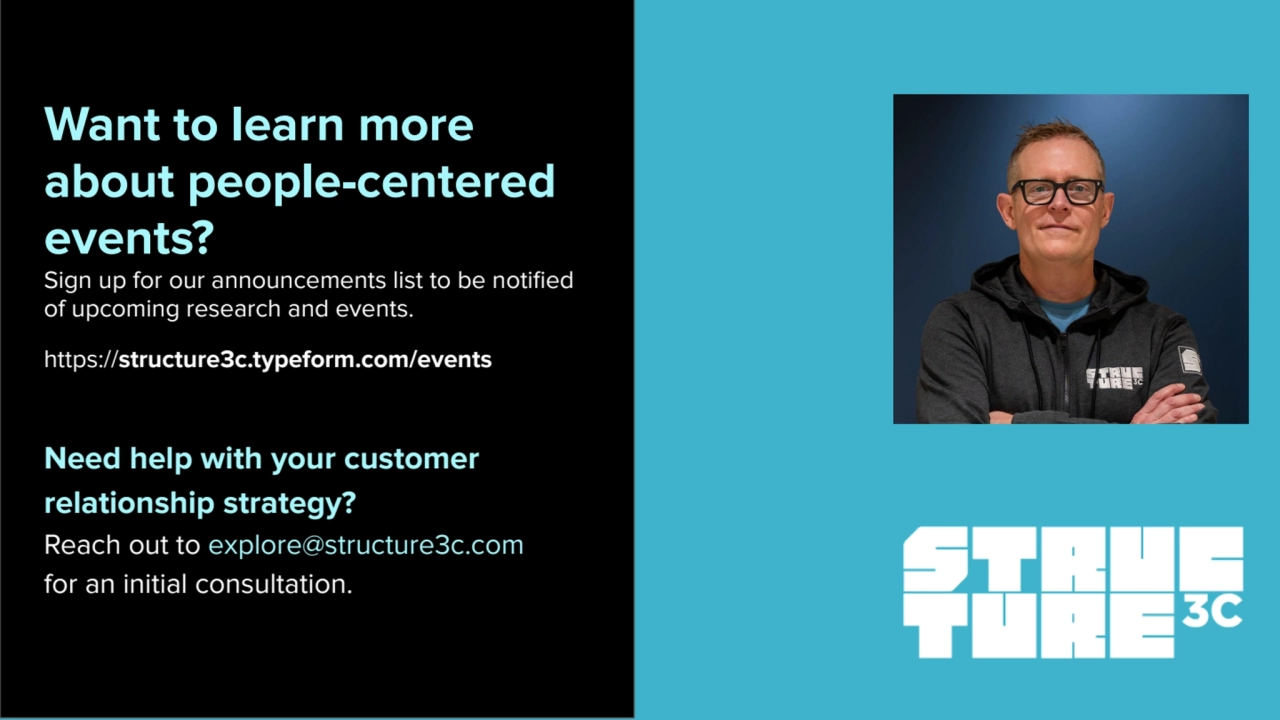
Unconference: A Guide For Hosting People-centric Events
- 1. Unconference An Introduction to people-centered events Bill Johnston
- 2. What is an Unconference? In short, it is the opposite of a traditional conference in that: ■ Participants set the agenda ■ There are no “expert on stage” sessions ■ Participants have a strong interest (or passion) in the topic ■ Participants accept responsibility for contribution and learning Most Unconferences adhere to the principles of Open Space Technology, a simple framework for organizing and facilitating participant-driven events. Open Space Technology was developed by Harrison Owen when he realized that all the best things at his events were happening during the coffee breaks - so he decided to make his events one long coffee break! Photo Credit: Forum One
- 3. Start Here: Is an Unconference the right approach? Unconferences work well when: ■ The topic or theme is complex ■ There are still many unknowns about the topic ■ The topic requires the ongoing participation of a diverse group of people ■ There isn’t a central authority steering the event towards a particular outcome Adapted from the book “Open Space Technology” by Harrison Owen Unconferences are a great format to convene a community in-person!
- 4. Preparing for an Unconference ■ Crafting the Unconference Theme ■ Selecting Duration and Location ■ Crafting the Invitation
- 5. Crafting the Unconference Theme The theme or focus of an Unconference can be framed by articulating what question you (the host) are trying to answer. ■ What are the potential opportunities and risks Dell faces if we encourage all employees to participate on social media? ■ What is the future of the practice of online community leadership in the age of social media? ■ How might AI play a positive role in digital experiences? ■ How does mass adoption of mobile devices affect development of and participation in online communities? What question are you trying to answer? Are potential participants passionate about the topic? Will they take responsibility for engaging in conversations about the topic? In short, the two most important questions to answer are: ■ What question are you trying to answer? ■ Are potential participants passionate about the topic? Will they take responsibility for engaging in conversations about the topic?
- 6. Selecting Duration and Location Duration Some Open Space events can last up to 3 days but generally hosts stick to a 1 or 2-day duration. First time events are typically (but not always) one day. Location Your event space should (ideally) have: ■ A large area that can accommodate all participants arranged in a circle or rings of concentric circles. ■ Space for breakout sessions ■ Space for lunch and breaks where participants can eat and converse comfortably Possible Unconference Venues Event spaces, museums, university conference centers, corporate executive briefing centers, the more novel and interesting, the better. Tip: Try to avoid hotel ballrooms. Photo Credit: Forum One
- 7. Crafting the Invitation Who will come to your Unconference? The short answer is whoever cares about the topic. Inevitably you will need to create an invitation to your Unconference. In addition to being a standard piece of marketing collateral, the invitation does the important work of communicating the event’s theme and focus, signaling who the event is intended to convene and providing logistical (where/when) and registration details. It is natural to want to explain the mechanics of open space technology in the invitation, but this is often confusion and unnecessary. Harrison Owens’ advice “When it comes to explaining Open Space, don’t. Simply say that although it may be new to the group, it has been used all over the world with predictable results.” Your Invitation to the Online Community Unconference, 5/21 in Mountain View CA Hi Laurie, I'm writing to formally invite you to the Online Community Unconference, which takes place on May 21st in Mountain View, CA. I'd be delighted if you were able to participate. The Online Community Unconference offers a low cost, high value opportunity to connect with other online community and social media professionals (we expect 200+ in attendance this year!). Register early and take advantage of the super early bird rate of $49 (while tickets last). Please consider joining us? More details below: The Online Community Unconference is a gathering of online community professionals - managers, strategists, executives, tool providers, investors - to discuss experience and strategies in the development and growth of online communities. Those involved in online community and social media development (and social software in general) share many common challenges: community management, tools, marketing, business models, legal issues. As we have found with our past events, the best source of information on all of these challenges is other knowledgeable practitioners. The Online Community Unconference is held in the "open space" conference format, where participants set the agenda and steer the conversation of the day. The methodology ensures that content from the sessions is captured and compiled into a Book of Proceedings that serves as a read out from the day – see an example here: http://bit.ly/ocu_bop The Computer History Museum in Mountain View is ….
- 8. Hosting an Unconference ■ Welcome and the Four Principles and One Law of Open Space ■ Setting the Agenda & the Agenda Grid ■ The Agenda Grid, Note-taking, and the Newsroom ■ The Art of Closing
- 9. Welcome and the Four Principles and One Law of Open Space It’s time to start the event! As the facilitator, there are a few key things to cover to get the event started: ■ Welcome everyone ■ Restate the theme ■ Go over the schedule for the day ■ Explain venue logistics (layout, room names or numbers, restroom location and wifi) ■ Participant introductions ■ Explain the components of open space Participant Introductions I like to have everyone do a short introduction. Yes, everyone. I’ve done this with over 300 people in the room. The trick is to have a template for introductions (Name, Role, Organization), model the introduction and - most importantly - hold the microphone for the speaker. If you have a smaller group without a microphone, standing by the speaker is helpful. If participants begin to go off script, simply jump in, restate the template, and move on to the next person. Introducing the Principles and One Law of Open Space Open Space events adhere to a simple but powerful framework to create a participant-driven and self-guided experience. The Four Principles ■ Whoever comes are the right people; the most passionate people will show up for the conversation ■ Whatever happens is the only thing that could have happened; let go of expectations and work with the ideas, content and people in the room ■ Whenever it starts is the right time; don’t get too hung up on the schedule ■ When it's over, its over; when the conversation naturally plays out, it’s time to move on The Law of Motion & Responsibility* If you find yourself in a session that you are neither learning from or contributing to, you are responsible for moving to another session (or conversation) that might be more productive *Source: Lisa Heft, Open Space Facilitator and Trainer
- 10. Setting the Agenda & the Agenda Grid Watching the Agenda Wall come to life is one of the highlights of any Open Space event. The Agenda Grid The agenda grid is a grid made up of spaces on one axis (usually the x) and time slots on the other (usually y). Agenda grids can be laid out on whiteboards, created from butcher paper or taped out on a wall. The grid cells need to accommodate whatever sized paper or post-it participants are using for their topics. Lastly, the grid needs to be in place before the Unconference starts. Call For Topics Once the components of Open Space have been explained, the facilitator will invite participants to spend a few minutes thinking about their topic before they write it down. Once participants have their topics, they are invited to get in line to announce their topic and then place it on the grid. It’s not unusual for topics to overlap, or for topics to emerge as ideas begin to spark. Allow for a few minutes of participants refining and consolidating topics. Photo Credits: Forum One
- 11. The Agenda Grid, Note-taking, and the Newsroom The Agenda Grid Guides the Day Once the agenda grid is complete, invite participants to go to their first session. Remind them to check the agenda grid between sessions for any changes, updates or new sessions. Sessions and Note-taking Session leads are responsible for showing up and kicking off their discussions - remember, this is not intended to be a presentation or monologue. The session lead should ask for a volunteer to take notes during the session. After the session, the notetake should package up any physical or digital notes, photos or recordings and send them to the newsroom (typically via email or shared folder.) Newsroom The Newsroom compiles the notes from each session and shares out a compilation, typically in the form of a “Book of Proceedings”, at the end, or shortly after the event. Photo Credit: Dell
- 12. The Art of Closing Action Planning (pre-closing) There are times when an Unconference is either designed to make progress on specific issues, or the desire to articulate next actions emerges from the group. An easy way to accommodate this is to reserve some of all of the last session block of the day for personal or group action planning (what is needed, who is responsible, by when). You’ve come to the end of the day. It’s time to close the shared space. Reconvene the Circle / Share Learnings & Observations I like to reconvene the group into the circle we started the Unconference from. When everyone is back in the circle, I invite participants to share a key learning, takeaway or idea that is resonating for them. This is “popcorn” style feedback, with a couple of people running mics to the folks that want to speak. Close With Gratitude At the very end of the Unconference, I end with a gratitude session. I invite everyone to reflect on the day, and to think about a person who made a significant contribution to their experience. This could have been a great idea, feedback on a topic, a solution to their problem, an introduction to a contact - it could be anything they are grateful for about the experience. We then bring gifts into the circle. In our early Unconference this was wine and chocolate, as I lived in Sonoma at the time, but the gifts can be anything. We invited people to share their gratitude, and to give a gift from the circle to the person they were grateful to. It was a beautiful way to end the session. I always close by offering a final “thank you” for everyone’s presence, participation, contributions and good energy.
- 13. Further Reading
- 14. Further Reading Open Space is one of a number of people-centered facilitation methodologies. The list below contains resources for people-centred facilitation, community development and design. Open Space Technology: A User's Guide - Harrison Owen Open Space World - a community for Open Space facilitators Related Methodologies and Sources Liberating Structures The Surprising Power of Liberating Structures by Lipmanowicz and McCandless Gamestorming & Visual Thinking Gamestorming: A Playbook for Innovators, Rulebreakers, and Changemakers (the book) Gamestorming.com Dave Gray’s School of the Possible Human-centered Design and Creative Facilitation Luma Institute Innovating for People: A Handbook of Human-Centered Design Methods
- 15. Want to learn more about people-centered events? Sign up for our announcements list to be notified of upcoming research and events. https://structure3c.typeform.com/events Need help with your customer relationship strategy? Reach out to explore@structure3c.com for an initial consultation.